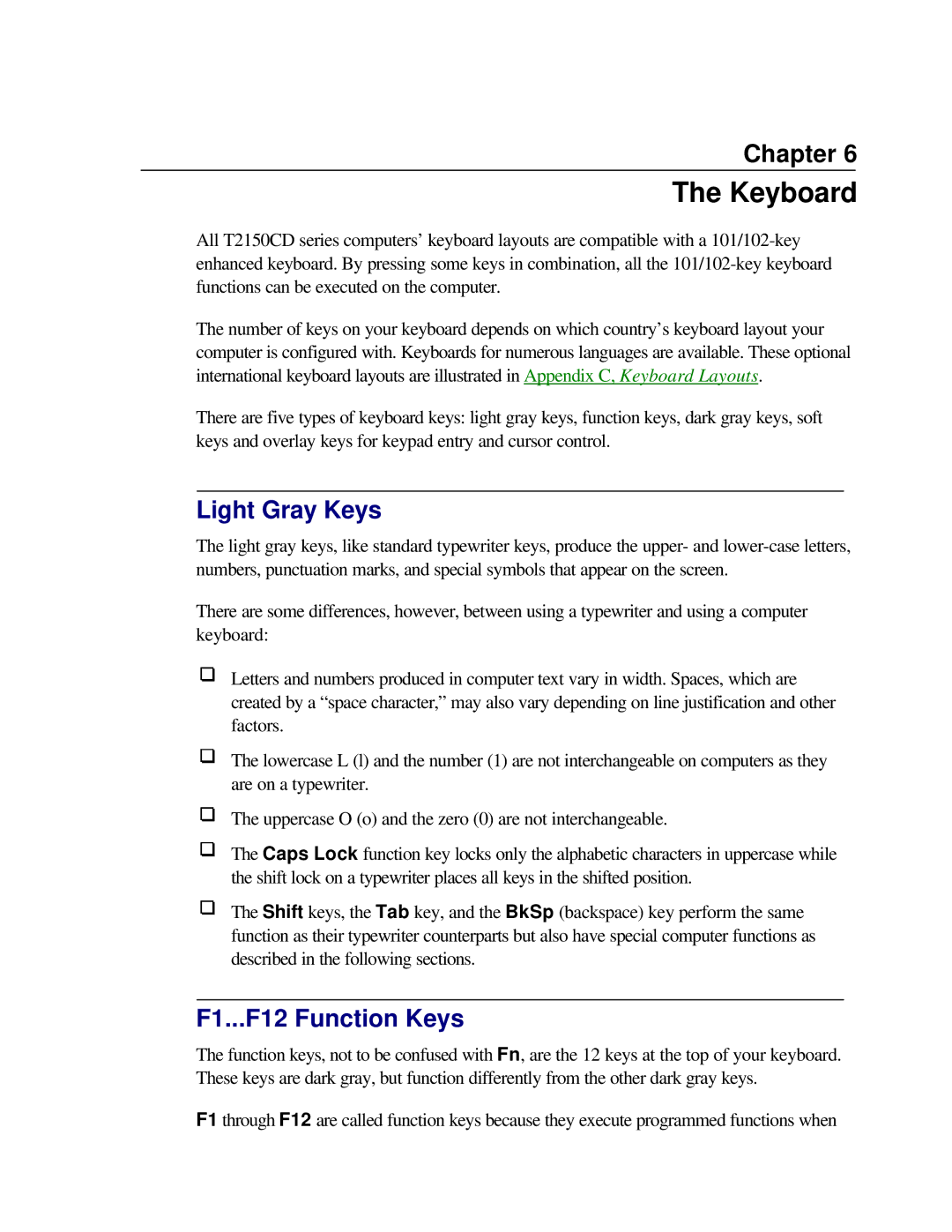
Chapter 6
The Keyboard
All T2150CD series computers’ keyboard layouts are compatible with a
The number of keys on your keyboard depends on which country’s keyboard layout your computer is configured with. Keyboards for numerous languages are available. These optional international keyboard layouts are illustrated in Appendix C, Keyboard Layouts.
There are five types of keyboard keys: light gray keys, function keys, dark gray keys, soft keys and overlay keys for keypad entry and cursor control.
Light Gray Keys
The light gray keys, like standard typewriter keys, produce the upper- and
There are some differences, however, between using a typewriter and using a computer keyboard:
Letters and numbers produced in computer text vary in width. Spaces, which are created by a “space character,” may also vary depending on line justification and other factors.
The lowercase L (l) and the number (1) are not interchangeable on computers as they are on a typewriter.
The uppercase O (o) and the zero (0) are not interchangeable.
The Caps Lock function key locks only the alphabetic characters in uppercase while the shift lock on a typewriter places all keys in the shifted position.
The Shift keys, the Tab key, and the BkSp (backspace) key perform the same function as their typewriter counterparts but also have special computer functions as described in the following sections.
F1...F12 Function Keys
The function keys, not to be confused with Fn, are the 12 keys at the top of your keyboard. These keys are dark gray, but function differently from the other dark gray keys.
F1 through F12 are called function keys because they execute programmed functions when
